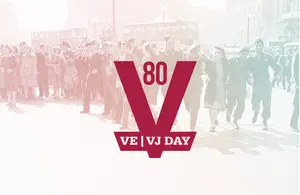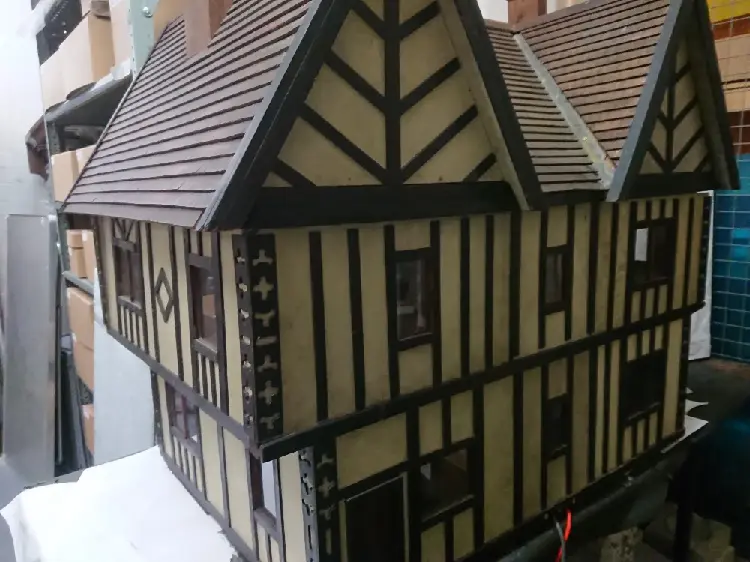
further events will be added to this page as details are confirmed
This year marks the 80th anniversaries of the end of the Second World War with VE and VJ Day commemorated with events around the country and locally.
We've already see a number of events commemorating Victory in Europe (VE Day), on 8 May, marking the Allied victory in Europe. The news resulted in millions celebrating the end of the war, with street parties, dancing and singing across the country.
The war in the Far East did not end until 15 August 1945 with VJ Day (Victory Over Japan).
In December 1941, Imperial Japan attacked the American naval base at Pearl Harbour in Hawaii and declared war on Britain and the United States.
Millions of British and Commonwealth troops joined Allied forces in Asia and the Pacific with warfare across a vast geographic region. Battles were fought in jungle terrain and punishing tropical heat.
The Far East campaign saw hundreds of thousands of British, Commonwealth and other Allied troops taken prisoners of war (POWs), where they faced appalling conditions, including disease, starvation, forced labour and brutality.
After the fighting stopped on 15 August, it would take several months for POWs, servicemen and women to return home to Britain, where their harrowing wartime experiences would continue to take a toll.
VJ Day marked the end of the Second World War which had begun with the German invasion of Poland on 1 September 1939.
VJ Civic Service of Commemoration and Remembrance
On VJ Day 80, we will pay tribute to our veterans, the Second World War generation and remember those who made the ultimate sacrifice for peace.
A Civic Service of Commemoration will take place on Friday 15 August 2025 at the World War Two Memorial within the grounds of Bury Parish Church (to the left of the main entrance to the church).
The service will include the laying of wreaths in remembrance, the reading of memories of 1945 from Bury’s Archives and poetry written to mark the occasion.
The service will start at 10.30am and is expected to last for approximately 30 minutes.
Local events
Information about local events will appear here including plans for the VJ Day 80 church service in Bury, which are being finalised.
Lighting up buildings
Buildings in the borough, including the Art Museum and Town Hall, will be lit up red on Friday 15 August to mark the anniversary.
Memorial Tree Planting
Working with the City of Trees, the Community Forest for Greater Manchester, we will be planting a memorial tree by the Commonwealth War Graves in Bury Cemetery from 11.45am, which will incorporate the national silence at midday.
All welcome to attend. Meeting point is the main entrance gates on St. Peter’s Road, Bury BL9 9RL.
Fusiliers Museum
The Fusiliers Museum will be holding
- WWII exhibition installation including focus on personal stories of those involved in the Chindits campaign
- Includes 2 films, one of which commissioned and produced by Museum Development North
- Family Fun Day and VJ themed craft activities and object handling - Friday 15 Aug at 10am-4pm https://www.fusiliermuseum.com/events/vj-80-family-celebration-day
Peachment Place's VJ Day celebrations
Join Peachment Place on Thursday 14 August from 2pm for a special afternoon marking the 80th anniversary of VJ Day.
There will be wartime vocalist Teresa, who will be performing a nostalgic set of classic hits, as well as a buffet for all to enjoy!
Donations are welcome and will go to support the Radcliffe Branch of the Royal British Legion.
Peachment Place is an Extra Care housing scheme to allow people to live independently, but with the comfort of on-site housing and care support. It offers security, whilst maintaining residents' privacy and for people to be part of a supportive and inclusive community.
The Met – Our Freedom project
Our Freedom: Then and Now is a new UK-wide, locally-led arts and creative programme which will produce 60 new pieces of work reflecting on what ‘Our Freedom’ means to local people and their communities, following the 80th anniversary of VE/VJ Day.
Freedom: A Journey and a Destination | The Met
Our Freedom: Then and Now - Future Arts Centres
National events
To mark the 80th anniversary of the end of the war in the Far East, a service will take place at the National Memorial Arboretum. In partnership with the government, the Royal British Legion will lead the nation in honouring and remembering those who fought and died during the War in the Far East.
National two-minute silence to mark VJ Day 80
A national two-minute silence will take place at noon on Friday 15 August to mark the 80th anniversary of the end of the Second World War.
Further information
National plans to mark VJ Day 80
The Together Coalition leading national community events
VJ Day reading materials available through Borrowbox
The Lancashire Fusiliers
On the outbreak of the Second World War (1939-45), 1st Battalion was based in India. It subsequently fought with various formations in Burma until 1943 when it became a Chindits formation with 77th Indian Infantry Brigade. It served with the latter until the end of the campaign.
2nd Battalion deployed to France with the British Expeditionary Force in 1939. It fought there in 1940 until being forced to retreat to Dunkirk, from where it was evacuated back to Britain. The battalion remained at home until late 1942, protecting against German invasion. It then deployed to North Africa for the Tunisian campaign (1942-43), before serving in Sicily (1943) and Italy (1944-45), where it helped break the Gothic Line.
The regiment also raised 15 additional Territorial and hostilities-only battalions. These served at home, in France and Germany, Malta, North Africa, Sicily, Italy, India and Burma.
You can find out more about the history and role of the Lancashire Fusiliers during the war on the National Army Museum website
Bury Art Museum - A Child’s War
On display at Bury Art Museum is Dolls House made by Jack Hilton, whilst he was serving in the RAF during the Second World War.
Jack worked in his family's laundry in Radcliffe before joining the RAF in the Second World War, where he became a Sergeant. He started to build the doll's house whilst he was on active service, for his daughter Kathleen. He was based at RAF Manston in Kent and later, after its liberation, in Belgium, Gent. He sent the doll’s house and its furniture little by little to his daughter who lived in Radcliffe with her mum.
Also on display is a wooden box contains moths and insects. It was made by, Harry Gremson, a Captain who served in the Medical Corps during WW2. In 1943, Harry was convalescing from a tropical disease in Ceylon and wanted to send his young son who lived in Sedgley Park, Prestwich a present. Harry, helped by his batman (an orderly assigned to officers) collected insect specimens; he often collected them during the nighttime using insect nets and bright lights to attract them.

VE Day commemorations in Bury
Events took place across the borough to mark 80 years since VE Day